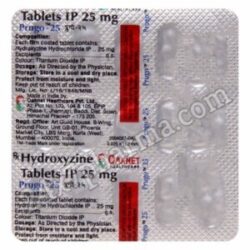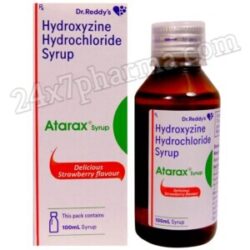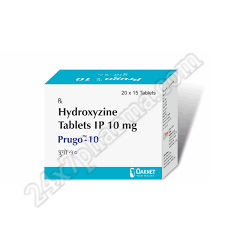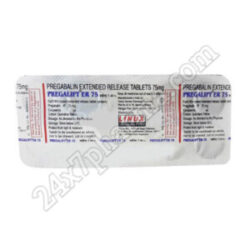Anxiety
Showing 1–16 of 25 resultsSorted by latest
Atarax Delicious Strawberry Flavour Syrup 100ml
Original price was: $17.$14Current price is: $14.Toficalm 50mg Tablet 30’S
Original price was: $24.$21Current price is: $21.Toficalm 100mg Tablet 10’S
Original price was: $13.$11Current price is: $11.Pregalift ER 50mg Tablet 30’S
Original price was: $13.$11Current price is: $11.Opiprime 50mg Tablet 30’S
Original price was: $13.$11Current price is: $11.Nextril 100mg Tablet 10’S
Original price was: $16.$13Current price is: $13.Hyrax Oral Solution 100ml
Original price was: $12.$11Current price is: $11.The feeling of anxiety can be a common emotion that we all experience at one time or other moment in time. Everybody experiences anxiety prior to the event of an examination, performance or interview.
For certain individuals, however, anxiety can be excessive and affect the routine of daily life. If anxiety becomes a concern in your daily activities this could be a sign of anxiety-related disorders.
Anxiety disorders are the 2nd most common mental disorder in the U.S., affecting 40 million people aged 18 or older that’s about 18 percent of those. Anyone can be affected by anxious disorders.
But there are certain dangers that make people more susceptible to developing anxiety disorders, such as factors like the gene profile of the individual or their brain chemistry, as well as the life-related factors.
The symptoms of anxiety disorders vary from mild to serious and may include physical signs such as the racing of your pulse sweaty hands, sweaty fingers and breathing issues.
Individuals suffering with anxiety disorders feel agitated or irritability, muscle tension, insomnia and problems with in concentrating. If you suffer from any symptoms on a regular basis and are unable to eliminate them you should talk to an expert in mental health in order to determine if you suffer from anxiety disorders.
Different types of anxiety disorders
It is possible to identify a range of different types of anxiety disorders Each one of them has a distinct patterns of signs. The most frequently used forms of anxiety disorders are:
Generalized anxiety Disorder (GAD): People suffering of GAD suffer from constant and constant worry about various subjects, including their health or their work or family, as well as the financial situation. They may be unable to manage their anxiety, and can be anxious and nervous. GAD sufferers GAD may also be suffering from physical symptoms such as muscle tension and fatigue as well as difficulty in concentration.
Panic Disorder: People suffering with panic disorder suffer from frequently and abrupt periods of intense fear that are also known by the phrase “panic attack.” The episodes typically last approximately 10 minutes and may be physical symptoms like chest pain, heart palpitations, breathlessness stomach pain, and dizziness. People suffering from panic disorder are afraid of having another attack and usually avoid areas in which they’ve experienced previously experienced an attack.
Social Anxiety Disorder (SAD) is also called social phobia. SAD is characterized by anxiety about the dark as well as a reluctance to attend social occasions such as social gatherings and public speaking occasions. People suffering from SAD are often worried about being embarrassed or humiliated when they’re in social settings. This is the reason why they tend to avoid social gatherings completely.
Specific Phobias: A specific phobia is an intense fear of a specific object or situation such as heights, flying insects, blood/injections/injury (known as needle phobia), or dogs (known as cynophobia). People who have specific phobias typically will go to extreme lengths to avoid triggers of their fears and can experience extreme anxiety in the event of exposure to the trigger.
Obsessive Compulsive Disorder (OCD): OCD is defined by the persistent, incessant thoughts (known by the term “obsessions”) which can cause repetitive behaviors (knownas “compulsions”). Typically these obsessions are due to the fear of germs and contamination, the desire for precision or symmetry and unwanted thoughts of violence or sexuality . Common compulsions include frequent hand washing routines, checking routines, and mental compulsions that involve counting, repeating words, or even praying. People suffering from OCD often recognize that they’re not rational but are not able to stop themselves by engaging in compulsion behavior.
Post-Traumatic Stress Disorder (PTSD): The disorder is a kind of anxiety disorder which can result from having experienced or witnessed traumatizing events such as natural or accidental disasters as well as sexual assault, combat and physical assault . The people affected by PTSD tend to recall their experiences through vivid flashbacks or nightmares . They may also avoid certain individuals or locations that bring back memory of trauma and are in constant state of stress . Symptoms usually appear three months after the incident that caused the trauma, however it can be quite a long time before symptoms show up .
Anxiety is a normal feeling that we all experience at times however, when it starts to influence the way we live, this may be a sign of the presence of anxiety-related problems.
There are several anxiety disorders, each identified by a specific set of signs. If you think you might are suffering from an anxiety-related condition it is crucial to talk to a professional in mental health. They can give you a specific diagnosis and treatment plan.
















